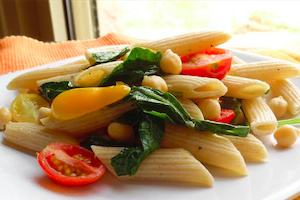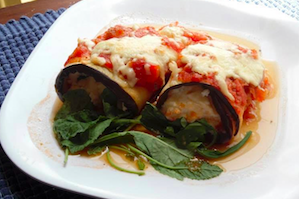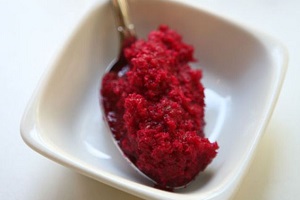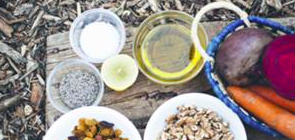Israel's Hottest New Chefs Share Their Top Recipes
By Danielle Frum
If you travel through Israel experiencing only its culture and history, you can get a real sense of what it would be like if peace with its neighbors could be achieved.
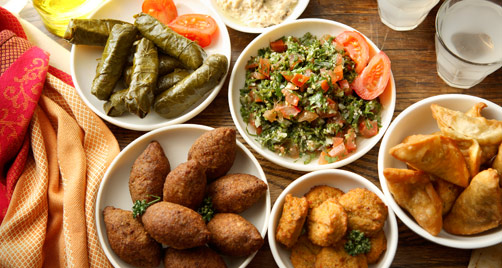
As with Italy, France or any other major destination, Israel has its own distinct food, architecture, tourist sites and national characteristics — qualities that can go unappreciated when a visitor’s focus is mostly on the political issues or religious tensions.
I’ve noticed that when I tell my friends I am headed to Israel, they will get a troubled look on their faces; rather than the usual perfunctory “Safe travels” or “Have a great time” they will say, “Stay safe,” as if I’m headed off to a war zone rather than to taste wines in the Carmel valley.
To be fair, last summer’s tourist season was obliterated by the Hamas barrage of rockets. The beach hotels were half empty. You could get a reservation in any restaurant that, only the month previous, had been booked solid for the coming year.
I don’t wish to minimize or seem to dismiss these ongoing troubles but the barrage of rockets is, obviously, not the norm; nor are the dust-ups between Jews and Muslims within Israel’s borders. Indeed I feel as safe walking through the streets of Tel Aviv or Jerusalem as I do in London or Paris.
The friendly vendors in the Arab section of the Old City are as happy to sell me tchockes as their counterparts in the Christian and Jewish quarters. Having visited the major sites on previous visits, I now enjoying visiting Israel, and especially, Tel Aviv, for itself — experiencing it the way those who live there do. From this viewpoint, the daily Israeli-Arab disagreements more often seem to be over who serves the best hummus than the settlements.

Indeed last Saturday, my eldest daughter Miranda, who lives in Tel Aviv, induced me to take her and her younger sister to “Luna Park” — Tel Aviv’s oldest (and I think only) amusement park.
I did not see any other tourists there; the quaint, small-scale grounds — equivalent to an old-fashioned county fair — appeared to be entirely a local attraction.
Two things stood out to me:
First, the families of Israeli Jews and Arabs are capable of peaceably lining up together for rides and food. Young women in head scarves were untroubled by groups of yalmuke-wearing boys ahead of them and vice versa. There were no angry encounters except when — as seems to be the local custom — youths tried to cut the queue.
Second, the crowds were unbelievably fit — a sharp demographic contrast to Six Flags America. Even the metal rails that herd you to the front of the line were only about 24-inches wide — if you were wider than that you turned sideways, but my suspicion was, many Americans would get stuck in them, like Winnie-the-Pooh in Rabbit’s front door.
The general fitness of Israelis is one of the great culture shocks to American visitors — the product of a society in which everyone serves in the army, combined with a healthy Mediterranean diet (at Luna Park the food vendors offered salad in addition to the usual junky stuff — never seen that before at an amusement park!).
But that diet is changing too — for the better. In my last newsletter, I wrote about my schooling in Israeli wines, courtesy of the Mamilla hotel’s sommelier, Maor Efrati, in Jerusalem. In the coming weeks I’d like to introduce you to some of the best and exciting chefs who are taking the Mediterranean diet to the next level, producing sophisticated and distinctly Israeli fusion cuisine not to be missed on your next visit. Each one has agreed to share a signature recipe for FT&V's weekly “Seasonal Shabbat” feature. Even if you can’t get to Israel, you can bring some of its flavors to your Friday night dinners.
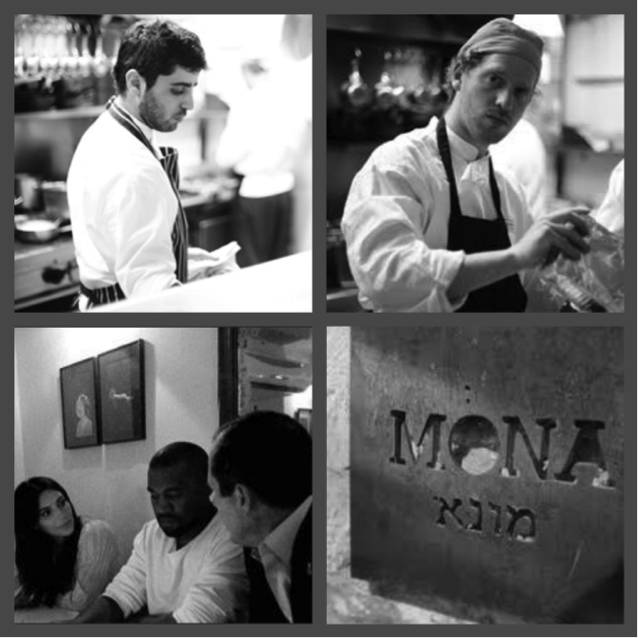
So first up: chefs Moshe Gamlieli and Itamar Navon, who took over the elegant and popular Mona restaurant in Jerusalem five months ago. There is a reason Kim and Kanye stopped by to dine here on their visit to the Holy Land in April, where they baptized their daughter North.
Located in what was a 19-th century Ottoman mansion-turned-art-school (Bazelel, the first art school in Israel), for 40 years Mona served mainly as a non-Kosher bar to the city’s political activists and intellectuals, being one of the few places to drink on a Friday night. in subsequent decades, it became a more formal, intimate restaurant serving French-based cuisine. Four years ago, Mona was bought by the owners of a popular restaurant based in the famous Mahane Yehuda market, where Gamlieli, now 28, worked as a chef. The menu changed to a more seasonally-based one. Then, earlier this year Gamlieli and Navon, 30, were able to able to secure financing to buy the restaurant. They completely upended its menu. “We were unleashed,” the two young chefs told me, smiling.
To do what? As they say themselves, “it’s hard to refine our cuisine to one style.” Gamlieli has cooked in the United States, France and London; Navon for his part has worked in London and Australia. “We are always trying to learn,” Navon said. “Sometimes our dishes are classic. Sometimes they are very young.”
The menu itself appears simple: Printed in Courier font, the descriptions are terse.

There is a little bit of everything here — French, Italian, even Indian — but what makes the dishes special is that they are always brought home with some original element of local spices or ingredients. And, staying true to Mona’s heritage, this is not the place to come to if you are avoiding traif.
I asked the chefs what was their most innovative dish. To my surprise, Gamlieli replied, “The tomato consommé. It is outstanding.” What could be so outstanding about a consommé? Not wishing to leave me in doubt, he disappeared to the kitchen. He returned with a small glass bowl. empty except for a little pile of chopped garnish — some dried olives, oregano, Swiss chard, and fennel leaf. On the side was an equally small glass pitcher filled with a clear, cold liquid. Gamlieli poured the liquid over the garnish, offered me a spoon and invited me to taste it.
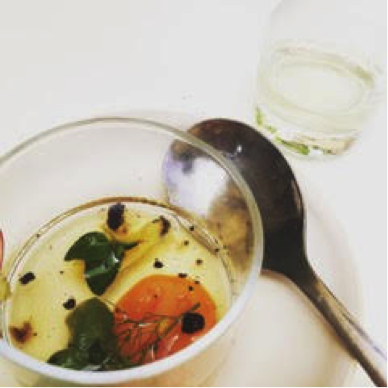
“Where is the tomato?” I asked.
He nodded at me again to taste.
What I tasted was indeed outstanding. The soup, while completely colorless, was rich with the flavor of the freshest tomatoes, cucumbers and other elements of an Arabic salad — which in fact was what the chefs had based it upon. The secret lay in blending the vegetables all together, and leaving the mixture to drain overnight through cheesecloth. You can find the recipe for it here. It makes for the perfect starter to a Shabbat lunch, not least because it is made the previous night and served chilled. Plus, there is that WOW factor from the very first sip.
Fig Tree & Vine is a stylish guide to modern Jewish living offering exclusive products and creative tips to enhance Jewish lifestyle. Fig Tree & Vine sources the world to bring its customers the best and latest in Jewish design and food.

